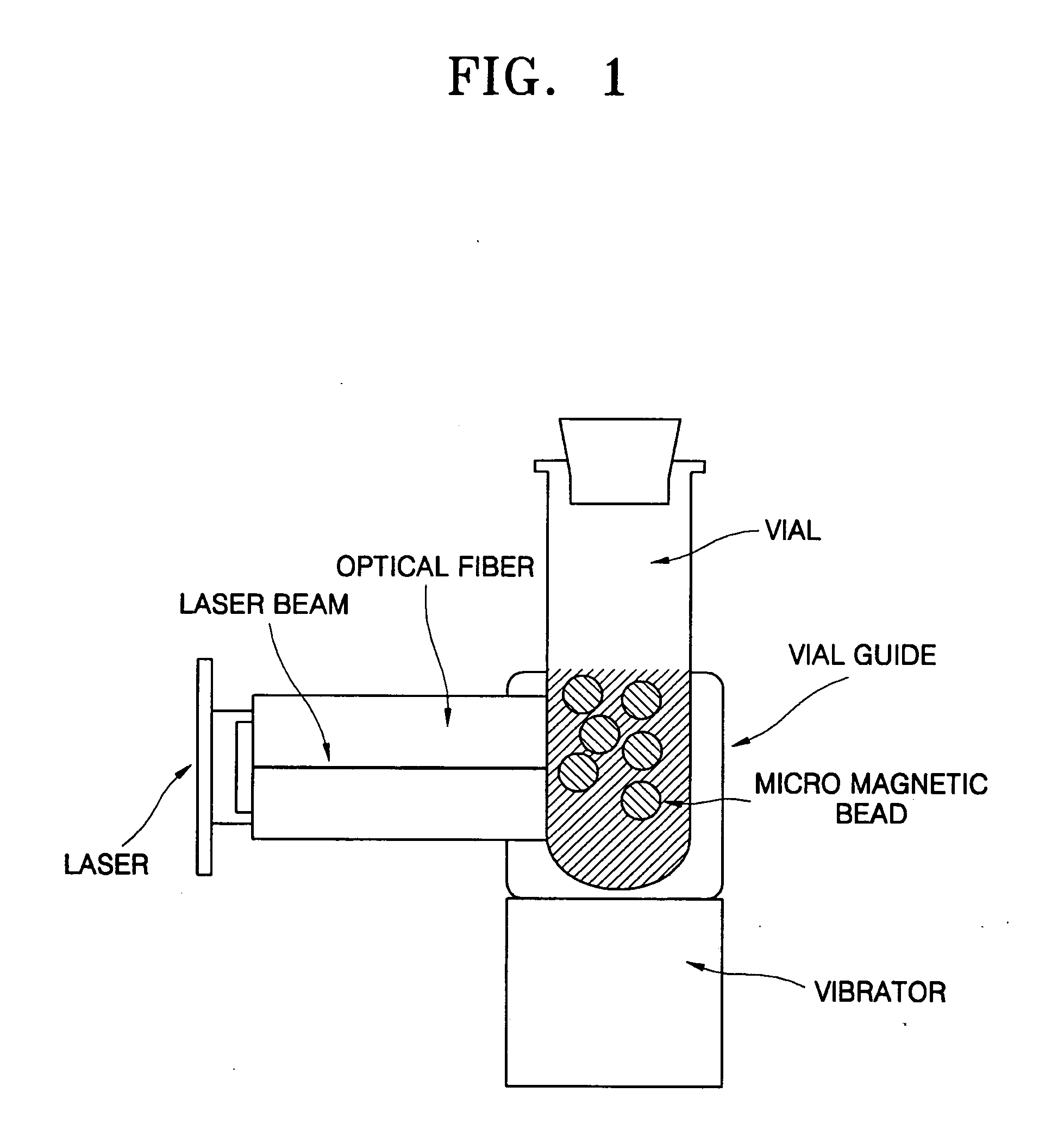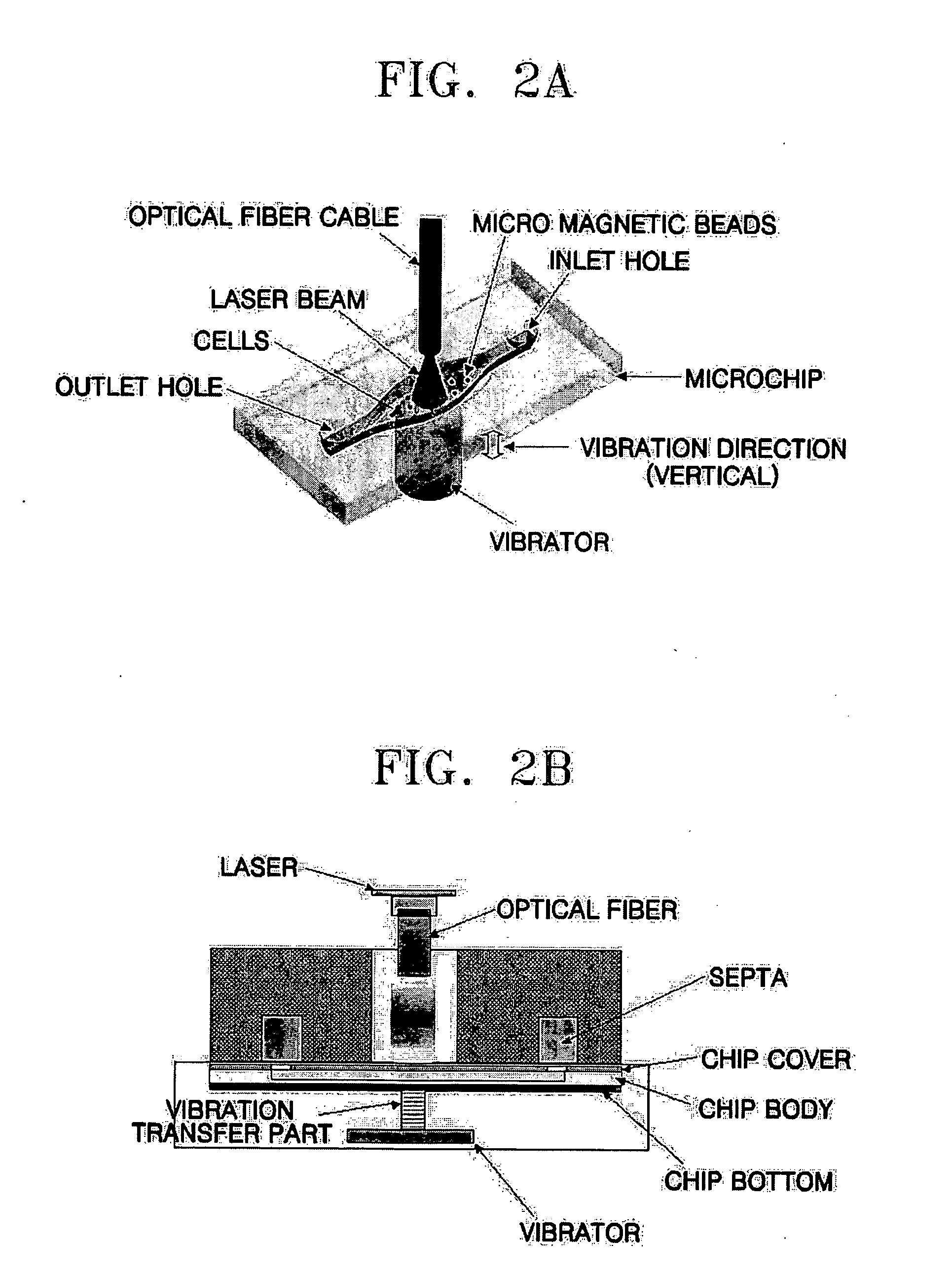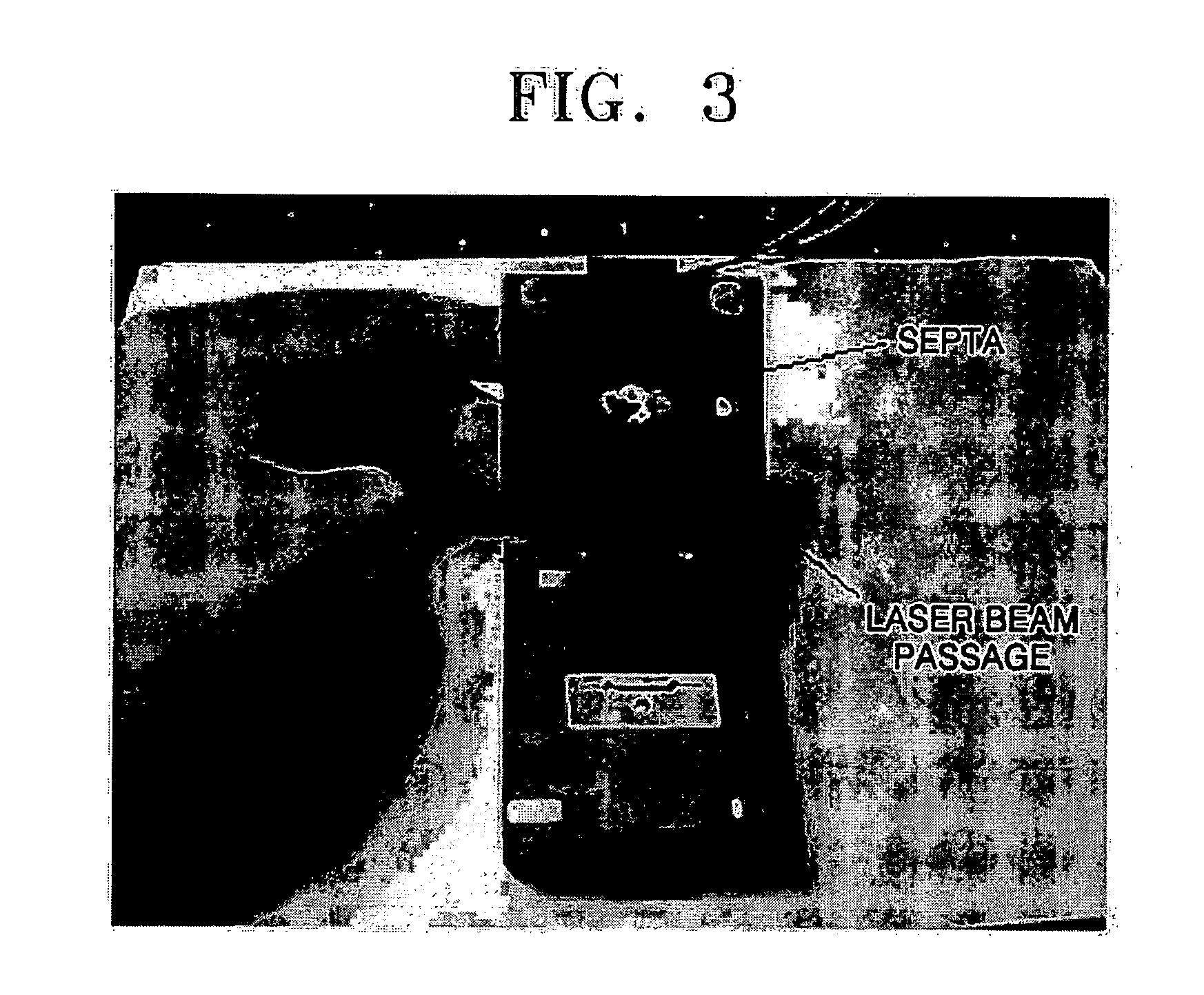Method and apparatus for the rapid disruption of cells or viruses using micro magnetic beads and laser
a technology of applied in the field of rapid disruption of cells or viruses using micro magnetic beads and lasers, can solve the problems of harsh chemicals used to disrupt cells, labor-intensive and time-consuming chemical methods, and chemical lysis methods, so as to increase the efficiency of pcr and efficiently amplify
- Summary
- Abstract
- Description
- Claims
- Application Information
AI Technical Summary
Benefits of technology
Problems solved by technology
Method used
Image
Examples
preparation example 1
[0094] As illustrated in FIG. 1, bacterial cells prepared as describe below (90 μl) and micro magnetic beads (30 μl, Dynabeads® M-270 Carboxylic Acid, DYNAL, Norway) were mixed in a vial located in a vial guide (AMITECH, Korea). 808 nm, 13.8 W high power laser beam (HLU25F100-808, LIMO, Germany) was applied to the mixture for disrupting cells for a specific time in individual experiments while stirring the vial by vortexing (see FIG. 1).
preparation example 2
Bacterial Strain and the Determination of Bacterial Cell Viability
[0095]E. coli strain BL21 and Streptococcus mutans (ATCC# 35668) were cultured at 37° C. with vigorous aeration in brain heart infusion (BHI) media to exponential phase (OD600=0.5˜1.0). The bacterial cells were harvested by centrifugation and washed twice with 3 ml of phosphate-buffered saline (PBS) solution. The cells were resuspended in PBS (cell density; 1×105 cells / μl). The number of viable cells was determined by the ability of single cells to form colonies. Aliquots of E. coli cells (1×103) after laser beam radiation were spread onto BHI plates. The plates were incubated at 37° C. overnight, and the number of colonies was counted.
[0096] A Staphylococcus epidermidis (ATCC#14990→12228) was cultured at 37° C. with vigorous aeration in Nutrient Agar (NA) media to exponential phase (OD600=0.5˜1.0). The bacterial cells were harvested by centrifugation and washed twice with 3 ml of phosphate-buffered saline (PBS) sol...
preparation example 3
Extraction of Bacterial Genomic DNA
[0097] In order to compare the efficiency of DNA release by laser method with the efficiency of other known conventional methods, E. coli genomic DNA (from 0.9×105 cells equivalent to the number of cells used for each laser lysis) was prepared using the boiling method for 5 min at 95° C.
PUM
 Login to View More
Login to View More Abstract
Description
Claims
Application Information
 Login to View More
Login to View More - R&D
- Intellectual Property
- Life Sciences
- Materials
- Tech Scout
- Unparalleled Data Quality
- Higher Quality Content
- 60% Fewer Hallucinations
Browse by: Latest US Patents, China's latest patents, Technical Efficacy Thesaurus, Application Domain, Technology Topic, Popular Technical Reports.
© 2025 PatSnap. All rights reserved.Legal|Privacy policy|Modern Slavery Act Transparency Statement|Sitemap|About US| Contact US: help@patsnap.com



